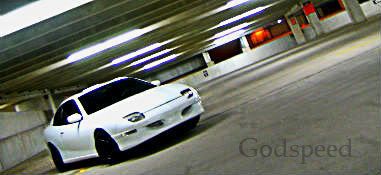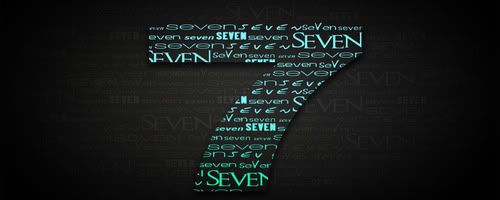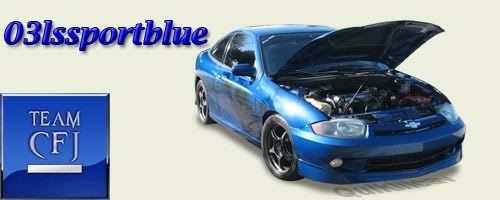From Ford... .
ROBUST, FORD TOUGH: ALL-NEW 6.2-LITER GASOLINE ENGINE COMPLEMENTS 2011 FORD SUPER DUTY
•The 2011 Super Duty with the all-new Ford 6.2-liter V-8 engine will deliver significantly improved torque and horsepower as well as class-leading fuel economy; it can run on regular-grade gasoline, E85 or any blend in between
•Optimization of the engine’s “breathing” delivers increased horsepower compared with outgoing F-250/F-350 6.8-liter engine
•Base engine performing flawlessly in Ford F-150 SVT Rapor R off-road racing truck, complementing rigorous testing regimen
DALLAS, Sept. 24, 2009 – An all-new 6.2-liter V-8 gasoline engine, which has its roots in Ford Racing powerplants, joins the lineup for the 2011 Ford F-Series Super Duty.
“Our all-new 6.2-liter V-8 engine uses reliable components and proven technology that has been optimized for the high performance and efficiency that our Super Duty customers demand,” said Mike Harrison, Ford V-8 engine programs manager. “It delivers not only significantly better torque and horsepower than the outgoing engine, but also improved fuel economy.”
Core to the improvements is the adoption of an all-new engine architecture, with increased bore spacing, that allows better engine “breathing” in both the intake and exhaust for more power and more overall efficiency.
A closer look at how the new engine achieves its performance:
•Large bore, shorter stroke: This approach to creating power has its roots in storied Ford racing engines from the past. The large bore (102 mm) allows for larger intake and exhaust valves for improved engine breathing, and the short stroke (95 mm) allows higher engine speed for increased horsepower. Still, peak horsepower is generated at a relatively modest 5,500 rpm.
•SOHC valvetrain with roller-rocker shafts: The single overhead camshaft (SOHC) per cylinder head design results in a stiff valvetrain that allows optimized camshaft lift profiles and helps produce great low-speed torque. The roller-rocker shafts allow valve angles to be splayed, resulting in optimized intake and exhaust port layout for better breathing.
•Dual-equal variable cam timing: Intake and exhaust valve opening and closing events are phased at the same time to optimize fuel economy and performance throughout the engine speed range and throttle positions.
•Two spark plugs per cylinder: Because of the large bore size, two spark plugs per cylinder are used to more efficiently burn the fuel-air mixture in the combustion chamber, enabling better fuel economy and increased engine torque. The twin plugs also help the engine maintain a smooth, stable idle.
•Dual knock sensors: A knock sensor on each bank of cylinders of the V-8 engine allows the spark timing of each of the cylinders to be individually optimized real time, throughout the engine speed range. The engine continuously monitors engine performance and applies this real-time learning to optimize timing via an adaptive algorithm.
•Better engine crankcase “breathing” and efficiency: Significant development work and computer-aided engineering optimized the cylinder block for more efficient airflow in the crankcase as the pistons move up and down in the bores, resulting in improved torque at higher engine speeds. Piston-cooling jets squirt oil on the underside of the pistons to keep the piston crowns cool under extreme operating conditions. The cooling jets also allow for a higher compression ratio for better engine efficiency and faster engine oil warm-up on cold starts, also improving fuel economy.
Key features of the new 6.2-liter V-8 gasoline engine include:
•Cast-iron engine block and four-bolt main bearing caps, with cross bolts, for durability
•Aluminum cylinder heads, with two valves per cylinder and two spark plugs per cylinder
•Cast-iron crankshaft, with dual-mode damper
•Forged steel connecting rods
•Cast-aluminum pistons, with cooling jets
•Single overhead camshaft with variable valve timing and roller-rocker shaft valvetrain
•Magnesium cam covers for lighter weight
•Stamped-steel oil pan
•Composite intake manifold
•Stainless-steel fuel rail; port-fuel-injected; mechanical returnless fuel system
•9.8:1 compression ratio
•E85/flex fuel capable
Performance heritage with proven durability and reliability
The concept of using a large-bore engine to make horsepower is part of Ford’s DNA, especially its racing heritage – the famous Ford Boss 302 and 351 engines, for example, pioneered many of the same concepts. Several racing projects proved out the performance, durability and flexibility of the new 6.2-liter V-8 engine architecture.
Among the racing-themed highlights that contributed to the engine’s development:
•A 7.0-liter version running on E85 fuel produced 800 horsepower in a winning Mustang drag racing application driven by Don Bowles
•A specially calibrated production-based 6.2-liter engine achieved 500 horsepower and ran flawlessly in the Ford F-150 SVT Raptor R race truck in the 2008 Baja 1000
Testing on the 6.2-liter V-8 included running multiple engines for more than 500 hours at peak torque and peak horsepower as well as customer-correlated 1,000-hour road load tests to ensure dependability for even the toughest Ford F-Series Super Duty customer.
All told, more than 50 engines were put through the dynamometer lab, running a variety of durability and development tests, undergoing extremes far harsher than can be expected – or duplicated – in the real world. Testing also included high-speed durability, crankshaft-torsional evaluation and engine thermal cycling where the running engine is “shocked” from one coolant temperature extreme to the other.
“From the first test on the dynamometer, this engine was very reliable,” said Bob DeBona, supervisor, Engine Performance and Development. “The precision that went into the engineering and manufacturing of this engine led to very few tweaks to the block during development. Components such as the crank, connecting rods, heads and intake manifold stayed essentially the same throughout our durability testing, which is a testament to the reliability of this new engine. It’s able to pound out the torque, hour after hour, week after week, demonstrating extreme durability.”
The new 6.2-liter V-8 gasoline engine will be built at the Romeo (Michigan) Engine Plant.
-----------------------
ALL-NEW FORD-ENGINEERED, FORD-TESTED, FORD-BUILT DIESEL MAXIMIZES 2011 SUPER DUTY'S PRODUCTIVITY
•An all-new 6.7-liter Power Stroke® V-8 turbocharged diesel engine – debuting in the 2011 Ford F-Series Super Duty – will deliver significantly improved torque and horsepower as well as class-leading fuel economy, enhancing productivity and further strengthening Super Duty’s position as the class leader for towing and payload
•Extensive durability testing put the new Power Stroke diesel engine through the equivalent of 250,000 miles
•Turbocharger with industry-first dual-sided compressor wheel delivers fast throttle response along with the volume of air boost needed for maximum power; new engine also is biodiesel compatible up to B20
DALLAS, Sept. 24, 2009 – A new era in Ford diesel technology arrives with the Ford-engineered, Ford-tested and Ford-manufactured 6.7-liter Power Stroke® V-8 turbocharged diesel engine.
Debuting in the next-generation Ford F-Series Super Duty truck, the new diesel engine will deliver significant improvements in torque and horsepower as well as class-leading fuel economy while adding more fueling flexibility and easily meeting stringent new emissions requirements.
The new diesel 6.7-liter engine also shares the Super Duty’s legendary reliability and durability while delivering best-in-class towing and payload.
“This all-new diesel engine has been so extensively tested both in the lab and in the real world that we’re confident we’re giving our customers the most reliable and productive powertrain available today,” said Derrick Kuzak, group vice president of Global Product Development. “Our Super Duty customers demand reliability and durability in their trucks so they can deliver the best results for their business and their customers. That’s exactly what this engine delivers.”
The diesel engine team made improvements and changes throughout the engine architecture to deliver on aggressive horsepower, torque, emissions and fuel economy targets. The 6.7-liter Power Stroke uses an “inboard exhaust” architecture, an automotive-industry first for a modern production diesel engine. It combines the best of proven technology with new, patented approaches backed by an extensive laboratory and real-world testing regimen to assure customer satisfaction.
Benefits of the new 6.7-liter Power Stroke V-8 turbocharged diesel engine include:
•First use of a compacted graphite iron (CGI) engine block in a Super Duty-class vehicle in North America; stronger than cast iron, Ford has successfully used CGI in engine blocks in products around the world. The block structure was optimized for reduced weight and maximum strength to meet the demands of higher torque and horsepower.
•Unique inboard exhaust and outboard intake architecture, an automotive-industry first for a modern production diesel engine, reduces overall exhaust system volume, which leads to better throttle response for the customer; additionally, reduced exhaust system surface area minimizes heat transfer to the engine compartment and improves NVH (noise, vibration, harshness) performance.
•The new engine architecture enables easier service work for all major engine components, potentially reducing down time. On turbocharger service, for example, the body/cab no longer has to be removed from the frame to access the turbo; also, the high-pressure fuel pump, EGR (exhaust gas recirculation) components and thermostats are directly accessible from the front of the vehicle.
•Honeywell’s VNT™ (variable nozzle turbine) DualBoost turbocharger features an industry-first dual-sided compressor wheel that works in a single housing. The unit is uniquely center-mounted on a pedestal low in the back of the valley for improved NVH. This turbocharger design allows the single unit to deliver the benefits of a twin-turbocharger system in a smaller, more efficient package, combining the benefits of a small turbocharger (faster response) and a large turbocharger (ability to compress and force more air into the engine for more power) in one unit.
•The high-pressure Bosch fuel system injects fuel at more than 29,000 psi. The system delivers up to five injection events per cylinder per cycle using eight-hole piezo injectors to spray fuel into the piston bowl. The direct-injection system is calibrated and phased for optimum power, fuel efficiency and NVH performance.
•Aluminum cylinder heads for reduced weight; the mid-deck construction with dual water jackets provides increased strength and optimal cooling; also, six-head bolts, instead of four as found on other engines, help improve sealing and maintain cylinder integrity even with the higher firing pressures; overall the engine is about 160 pounds lighter.
•Compatible up to B20 fuel, allowing greener fueling options of up to 20 percent biodiesel and 80 percent petroleum diesel.
“Our Super Duty customers are no-nonsense, no-compromise individuals,” said Barb Samardzich, Ford vice president, Global Powertrain Engineering. “Those are the attributes our team took to heart when engineering this all-new diesel engine so we can deliver Built Ford Tough capability, reliability and enhanced productivity.”
Rugged block and proven components
The capability and reliability found in the new 6.7-liter diesel engine starts with the engine block. The new Power Stroke’s block is made from compacted graphite iron (CGI), which is about twice as strong as cast iron. While this is the first use of a CGI block in North America in this class of vehicle, Ford has successfully used the material in engine blocks in other products around the world.
“Using a CGI block is the perfect solution for the new 6.7-liter Power Stroke,” said Adam Gryglak, lead 6.7-liter diesel engineering manager. “It provides the strength necessary for the increased torque and horsepower produced by our new engine, and it also offers significant weight savings.”
The diesel engine’s deep-skirted block and main bearing caps are cross-bolted for additional stiffness and to aid NVH. The cylinder heads mirror the engine’s attributes as a whole, with lighter weight combined with increased robustness: The cylinder heads are made of aluminum to save weight and, for improved sealing, feature six-head bolts per cylinder instead of the four-head bolts found on other engines.
The cylinder heads, which feature dual water jackets, are capable of firing pressures approaching 2,600 psi. The tall water jacket works as a manifold, flowing high-velocity water for cooling and adding to the structural robustness in the head to handle the higher firing pressures. Crankshaft durability is improved through Ford’s unique undercut and fillet roll treatment to relieve stress.
The valvetrain features patented dual hydraulic lash adjustors, which improves the performance and reliability of the valvetrain by using two pushrods per cylinder instead of the conventional single pushrod, with individual rocker arms. Other proven components round out the engine hardware, including fractured-split connecting rods and a fuel system capable of generating 29,000 psi to feed the common-rail direct-injection fuel system.
The oil pan, which bolts to the transmission, also acts as a structural member for improved powertrain stiffness and adds to Ford’s legacy of virtually bulletproof lower-engine architecture.
Built Ford Tough testing protocol to ensure durability
The testing protocol developed for the 6.7-liter Power Stroke V-8 turbocharged diesel incorporates the most rigorous engine tests found in Ford globally to ensure 250,000-mile durability. Extensive CAD (computer-aided design) and CAE (computer-aided engineering) work was completed to identify any potential challenges before hardware was created, which not only is time efficient but also helps ensure quality at the outset. Further, a comprehensive examination of warranty data and quality tools was used to determine the expected failure modes for every component and system.
Customer data, including driving styles, road types and vehicle usage (towing and payload), also played a key role in developing the testing program that best replicated Super Duty use.
Components were torture-tested in the laboratory with a regimen designed to exceed what even the most extreme-use customer might dish out. Engines literally ran continuously for hundreds of hours. Finally, a battery of in-vehicle, real-world tests validated the work done in the laboratories.
The strict testing work also ensured the new engine is B20 compatible, which allows customers a fueling option of using blends up to 20 percent biodiesel and 80 percent petroleum diesel. Durability cycles were run on multiple blends of diesel fuel to ensure the robustness of the system.
“These cross-functional tests give us the full spectrum of Super Duty customers – from those who run their trucks at maximum power with a maximum load for long periods to those who use them more in a start-stop mode,” said Ed Waszczenko, lead engine durability engineer.
All-new design for all-new engine
One of the obvious visual differences in the new 6.7-liter Power Stroke V-8 turbocharged diesel engine is the layout of the pipes. The exhaust manifolds, for example, reside in the valley of the engine instead of outboard, while the intake is outboard of the engine. The cylinder heads are essentially flipped around in comparison with previous V-8 engine architectures.
This unique layout – an automotive-industry first for a modern production diesel engine – has several advantages. First, the overall exhaust system volume is reduced, meaning air can be fed to the single turbocharger quicker for faster spool up and reduced lag, resulting in improved throttle response for the customer. The improved packaging also places components that need to be in cooler air away from hot exhaust pipes, resulting in better thermal management and, by extension, better fuel economy.
“The physical size of the system is smaller, but more importantly, the air-handling part of the system is considerably smaller and that translates directly into the responsiveness of the engine,” said Gryglak, noting that the volume of the exhaust system feeding the turbocharger is smaller by about 50 percent because of the inboard architecture.
Combining two turbochargers in one package
The single-sequential turbocharger – an industry first – is key to the new diesel engine’s performance. The unit has two compressor wheels driven off one turbine impeller. This approach combines the benefits of a single inertia wheel – faster response without lag – with the thrust of a larger turbocharger, with the ability to force more compressed air into the engine for more power.
The engine’s smaller exhaust volume combined with a corresponding smaller intake volume and smaller turbocharger creates a system that is quicker to boost, more responsive and better able to deliver horsepower and torque, especially at the low end, when the customer demands it.
The turbocharger includes an advanced variable nozzle turbine, which enables variable vane pitch angles, driving optimal turbine power to achieve optimal boosting levels for all operating conditions. The single shaft ensures the transition is seamless. The unit – compact in dimensions – is uniquely center-mounted on a patented pedestal low in the back of the valley instead of hung off the block, which helps balance the system and aids NVH performance.
Combustion system clean and powerful
The combustion system is the heart of the new 6.7-liter Power Stroke V-8 turbocharged diesel engine and in many ways encapsulates the careful balancing act the Ford team achieved in terms of power, fuel economy and reduced emissions. The key factor in the next round of federal emissions standards, which begin in 2010, is the reduction of oxides of nitrogen (NOx). To help reduce NOx, the new Power Stroke burns cleaner, thanks to an innovative way Ford developed to cool the exhaust gas recirculation (EGR) to efficiently recycle the combustion gases in the system.
Ford’s system runs the engine with the least amount of oxygen possible in order to reduce NOx without degrading performance and fuel economy. Ford’s solution runs the EGR through a two-step process utilizing separate cooling sources, something not typically seen. The end result is the EGR is brought into the intake at a lower temperature, which means more of it can be utilized, creating greater efficiency throughout the system.
A unique piston bowl design and the high-pressure fuel-injection equipment are huge enablers in achieving the balance of power and lower emissions. The system can deliver up to five injection events per cylinder per cycle, while eight holes in the injector spray fuel into the bowl.
The compressed-air ignition unique to diesels is aided by pilot fuel injections before the piston reaches the top, allowing the charge to heat up even hotter than what you get under normal compression.
“Then when the main injection occurs, we can mitigate NVH because we have a slower ignition process,” said Gryglak. “When the fuel burns, it doesn’t burn with a traditional pop or bang. The direct-injection system is calibrated and phased for optimum power, fuel efficiency and NVH.”
The new diesel engine features instant-start glow plugs, allowing quick start even in extremely cold temperatures.
How the new Power Stroke meets new emissions standards
The new 6.7-liter Power Stroke V-8 turbocharged diesel will employ an aftertreatment system to help comply with 2010 federal regulations to reduce nitrogen oxide levels in diesel emissions by more than 80 percent compared with the previous standard. The Ford aftertreatment system is a three-stage process; a key component is the use of Diesel Exhaust Fluid (DEF).
Injection of DEF to reduce NOx is a proven technology that’s been used throughout the automotive industry. Unlike other solutions used to control NOx, the DEF system allows the diesel engine to run at its optimum range in terms of fuel mixture. Some systems require the engine to run richer – which can be harmful to diesel engines – in order to control the NOx.
Step One: Cleaning and Heating – The first step in cleaning the diesel exhaust occurs when the exhaust stream enters the Diesel Oxidation Catalyst (DOC). The role of the DOC is twofold. First, it converts and oxidizes hydrocarbons into water and carbon dioxide. This conversion happens at about 250 degrees Celsius.
Second, the DOC is used to provide and promote heat, using specific engine management strategies, into the exhaust system. Through appropriate thermal management, this heat increases the conversion efficiency of the downstream subsystem(s) in reducing emissions.
Step Two: Knocking Out the NOx – The next step in the process is what’s known as Selective Catalytic Reduction (SCR). In this process, the NOx in the exhaust stream is converted into water and inert nitrogen, which is present in the atmosphere and harmless. Before the exhaust gas enters the SCR chamber, it is dosed with DEF, an aqueous solution that is approximately 67.5 percent water and 32.5 percent pure urea.
When heated, the DEF splits into ammonia and carbon dioxide. These molecules are atomized and vaporized, then enter a mixer that resembles a corkscrew. This twist mixer evenly distributes the ammonia within the exhaust flow. The ammonia enters the SCR module, which contains a catalyzed substrate, and through chemical reactions combines and converts the NOx and ammonia into the harmless inert nitrogen and water. Dosing occurs between 200 and 500 degrees Celsius.
Step Three: Scrubbing Away the Soot – The final part of the cleansing system for the diesel exhaust gas involves the Diesel Particulate Filter (DPF). The DPF traps any remaining soot, which is then periodically burned away, known as regenerating, when sensors detect the trap is full. The regeneration process sees temperatures in excess of 600 degrees Celsius to burn away soot.
Quieter, more refined diesel sound for improved NVH performance
Customers of the 6.7-liter Power Stroke turbocharged diesel engine will notice a quieter, more refined sound. Improvements to the combustion system, structural integrity of the compacted graphite iron block and the single turbocharger mounted to the engine block account for many of the NVH improvements.
Specific design upgrades were made to both the piston and the piston bowl to optimize the combustion process, which features a two-stage combustion event instead of a single-injection event, causing harsh, sudden and loud combustion. Instead, a starter or pilot injection of fuel begins the combustion process before the main injection.
The result is smoother combustion and a more refined sound for the customer. When at idle, two pilot injection events are used to make the firing process even smoother and aid in quietness. The “ticking” of the high-speed injectors also is quieted by specially designed covers on the engine.
Mounting the turbocharger from the center housing directly to the block provided several advantages as well in terms of NVH.
“When turbochargers vibrate, it can lead to other parts of the vehicle vibrating,” said Scott DeRaad, engine NVH engineer. “The exhaust system, for example, is directly attached to the turbocharger. So when the turbocharger vibrates a lot, the exhaust system vibrates too and that’s disturbing to the customer. Bolting the turbocharger directly to the block eliminates that concern.”
Using one turbocharger, instead of two operating in series or sequentially, helped solve some NVH challenges as well.
“Having one turbocharger eliminates the air-handling noises – the whooshes – as the engine switches from one turbo to the next turbo,” DeRaad said. “Our turbocharger also has ball bearings that pilot the shaft in the turbo, which helps eliminate the potential for the shaft of the turbocharger to gyrate in its housing, which can create noise.”
Other improvements include the addition of two resonators in the intake system as well as a third resonator near the air cleaner.
“We’ve been able to tune the diesel intake system to give us the sound we wanted,” DeRaad said. “It’s now a nice complement to the engine.”
The new diesel engine, which will be built at Chihuahua Engine Plant, is the perfect complement to the 2011 Ford Super Duty, delivering both capability and reliability.
“Developing the new 6.7-liter Power Stroke V-8 turbocharged diesel engine was an awesome endeavor,” Gryglak said. “After all the engineering and testing, we’re confident this engine will ensure the new Super Duty continues its leadership in capability, reliability and productivity.”
>>>For Sale? Clicky!<<<
-----The orginal Mr.Goodwrench on the JBO since 11/99-----

































